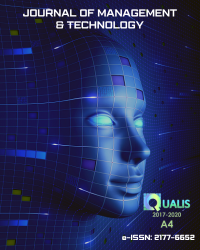Application of computational techniques in calculation and design works in applied mechanics
DOI:
https://doi.org/10.20397/2177-6652/2024.v24iSpecial.2916Resumen
Objective: The article explores the application of computational techniques in the calculation and design of engineering structures, focusing on how these methods improve the precision and efficiency of structural analyses. The study demonstrates the practical advantages of using computational programs to calculate longitudinal forces, normal stresses, and deformations in structures.
Methods: A combination of theoretical analysis and computational simulations using the Brus program was employed. The study examined a stepped rod subjected to tensile and compressive forces. Key parameters such as stress, deformation, and displacements were calculated using computational methods.
Results: The computational techniques proved highly effective in providing accurate and efficient structural analysis results. They reduced the time needed for calculations and minimized errors, allowing for multiple design iterations. These methods also improved the safety and performance of engineering designs by enabling quick optimizations.
Conclusion: The integration of computational methods into the analysis and design of engineering structures significantly enhances both precision and efficiency. These methods offer substantial benefits for practical engineering applications and educational purposes, preparing future engineers for modern challenges in structural design.
Citas
Abduev, M., Asgarova, M., Karimova, A., Mammadova, T., Sadiq, M., & Mammadova, K. (2024). Technological solutions for water resources management in azerbaijan to achieve sustainable development: Monitoring and improvement of management and forecasting. Revista Gestão & Tecnologia, 24(2), 96-113.
Aitaliev, Ş. M., & Duzelbaev, S. T. (1991). Materialdar kedergısı: Esepter şyğaruğa arnalğan oqu qūraly [Resistance of materials: Training manual for solving problems]. Part 1. Almaty: Rauan, 176 p.
Duzelbaev, S. T. (1996). Materialdar kedergısı: Esepter şyğaruğa arnalğan oqu qūraly [Resistance of materials: Training manual for solving problems]. Part 2. Almaty: Rauan, 176 p.
Faronov, V. V. (1999a). Turbo Pascal 7.0. Nachalnyi kurs: Uchebnoe posobie [Turbo Pascal 7.0. Beginner course: Training manual]. Moscow: Nolidzh, 616 p.
Faronov, V. V. (1999b). Turbo Pascal 7.0. Praktika programmirovaniia: Uchebnoe posobie [Turbo Pascal 7.0. Programming practice: Training manual]. Moscow: Nolidzh, 627 p.
Iosilevich, G. B. (Ed.). (1989). Prikladnaia mekhanika: Uchebnik dlia vuzov [Applied mechanics: University textbook]. Moscow: Vysshaia shkola, 351 p.
Khominenko, A. D. (Ed.). (1998). Osnovy sovremennykh kompiuternykh tekhnologii: Ucheb. posobie [Fundamentals of modern computer technology: Training manual]. St. Petersburg: KORONA print, 448 p.
Kirillova, E., Otcheskiy, I., Ivanova, S., Verkhovod, A., Stepanova, D., Karlibaeva, R., & Sekerin, V. (2023). Developing methods for assessing the introduction of smart technologies into the socio-economic sphere within the framework of open innovation. International Journal of Sustainable Development and Planning, 18(3), 693-702. https://doi.org/10.18280/ijsdp.180305
Knyazeva, N., Mikhailova, I., Usmanova, N., & Shindina, T. (2023). Overcoming barriers to the development of higher education teacher digital competencies: Challenges and solutions. Revista Gestão & Tecnologia, 23, 297-308.
Kultin, N. (1998). Turbo Pascal 7.0. St. Petersburg: BHV–Saint Petersburg, 336 p.
Kultin, N. (1999). Samouchitel. Programmirovanie v Turbo Pascal 7.0 i Delphi [Self-teaching guide. Programming in Turbo Pascal 7.0 and Delphi]. St. Petersburg: BHV–Saint Petersburg, 404 p.
Mironenko, N. I. (Ed.). (1992). Personalnyi kompiuter v zadachakh soprotivlenie materialov: Ucheb. posobie dlia studentov tekh. uchebn. zavedenii [Personal computer in materials resistance problems: Training manual for technical education]. Almaty: Rauan, 196 p.
Nikolaeva, M. V., & Suslennikova, E. Е. (2022). Innovative projects of the university as an indicator of the efficiency of its activities. Relacoes Internacionais no Mundo Atual, 2(35), 384-401.
Petrov, A. V. (Ed.). (1984). Vychislitelnaia tekhnika i programmirovanie [Computer technology and programming]. Moscow: Vysshaia shkola, 479 p.
Tajibaev, S. D. (1994). Qoldanbaly mehanika; Joğarğy oqu oryndary studentterıne arnalğan oqulyq [Applied mechanics: Textbook for higher educational institutions]. Almaty: Bilim, 336 p.
Titorenko, E., Ermolaeva, E., Ivanov, P., Ustinova, Y., & Dymova, Y. (2023). Designing the technology and composition of plant extracts using reduced atmospheric pressure. Nexo Scientific Journal, 36(02), 139-147. https://doi.org/10.5377/nexo.v36i02.16021
Tolmachev, M., Korotaeva, I., Zharov, A., & Beloglazova, L. (2022). Development of students’ digital competence when using the “Oracle” Electronic Portal. European Journal of Contemporary Education, 11(4), 1261-1270. https://doi.org/10.13187/ejced.2022.4.1261
Vinokurov, E. F., Petrovich, A. G., & Shevchuk, L. I. (1990). Soprotivlenie materialov: Raschetno-proektirovochnye raboty: Ucheb. posobie dlia vuzov [Resistance of materials: Calculation and design works: Textbook for universities]. Minsk: Vysshaia shkola, 479 p.
Descargas
Publicado
Cómo citar
Número
Sección
Licencia
Derechos de autor 2024 Journal of Management & Technology

Esta obra está bajo una licencia internacional Creative Commons Atribución-NoComercial 4.0.
Os direitos, inclusive os de tradução, são reservados. É permitido citar parte de artigos sem autorização prévia desde que seja identificada a fonte. A reprodução total de artigos é proibida. Em caso de dúvidas, consulte o Editor.


